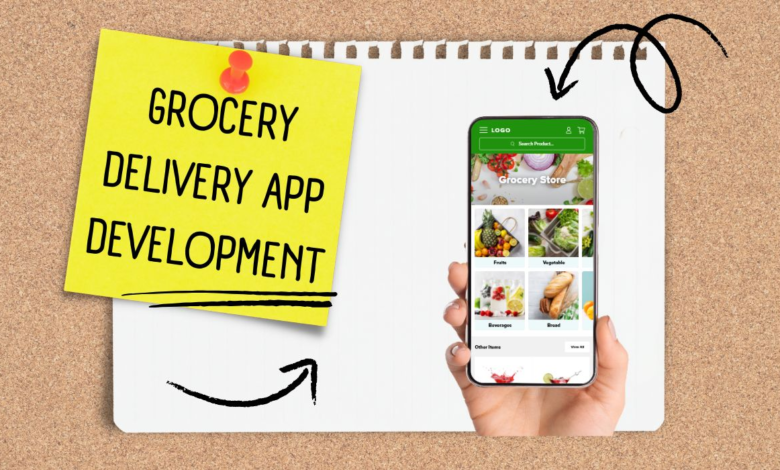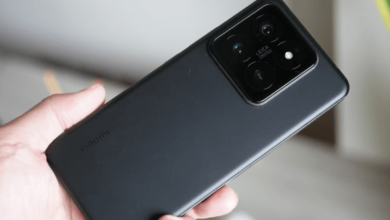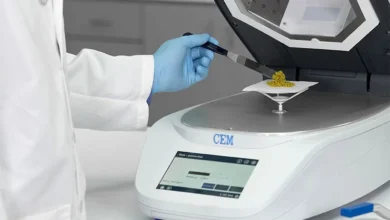Grocery Delivery App Development: Revolutionizing the Way We Shop

The convenience of grocery delivery apps has transformed the way we shop for essentials, allowing users to order groceries with just a few taps on their smartphones. In today’s fast-paced lifestyle, these apps have become a modern solution, meeting the demands of consumers seeking efficiency and ease. With seamless user experiences and advanced AI features, grocery delivery apps are now essential. In this article, we’ll dive into everything you need to know about grocery delivery app development, from essential features and tech stacks to industry trends and benefits.
What Are Grocery Delivery Apps?
Grocery delivery apps are mobile applications that allow users to purchase groceries online and have them delivered directly to their doorsteps. These apps connect consumers with local grocery stores, enabling them to browse products, place orders, and manage deliveries effortlessly. With the rise of e-commerce and digital convenience, grocery delivery apps have gained immense popularity, making shopping for groceries faster and more efficient.
See also: Step-By-Step Guide to Apply for a High-Risk Merchant Account
Types of Grocery Delivery Apps
There are three primary types of grocery delivery apps, each catering to different business models and consumer needs:
● Single-store Apps
Single-store apps are designed for specific grocery retailers. These apps provide customers with a dedicated platform to browse and purchase products from that particular store. Features typically include loyalty programs, promotions, and personalized shopping experiences, fostering brand loyalty.
● Aggregator Apps
Aggregator apps act as a platform aggregating multiple grocery retailers into one application. Users can browse various stores, compare prices, and select products from different retailers, providing convenience and flexibility. These apps typically charge a commission to the retailers for each order placed through their platform.
● Marketplace Apps
Marketplace apps function similarly to aggregator apps but often focus on connecting local farmers or producers with consumers. They enable users to buy fresh produce, organic products, and artisanal goods directly from suppliers, promoting local businesses and sustainable shopping.
Core Features of Grocery Delivery Apps
To ensure a successful grocery delivery app, incorporating essential features is crucial:
● User-friendly UI/UX Design
An intuitive interface enhances user experience, making it easy for customers to navigate through products and place orders without frustration. Design should prioritize simplicity, with clear navigation and engaging visuals.
● Easy Registration and Login
Streamlined registration processes, including social media integration and email login, allow users to sign up quickly and access their accounts with minimal hassle.
● Real-time Order Tracking
Providing real-time updates on order status and delivery timing enhances transparency and keeps customers informed throughout the shopping experience.
Advanced Features to Consider
In addition to core features, consider integrating advanced functionalities that can elevate the app’s performance:
● AI-based Product Recommendations
Utilizing AI algorithms to analyze user preferences and shopping behavior allows for personalized product recommendations, increasing customer satisfaction and sales.
● Inventory Management
Integrating inventory management systems helps retailers track stock levels in real-time, reducing the chances of order cancellations and ensuring customers receive their requested items.
● In-app Chat for Customer Support
Offering in-app chat functionality enables users to communicate directly with customer support, addressing concerns and resolving issues swiftly.
Strategies for Choosing the Right Business Model to Drive Growth
Selecting the appropriate business model is critical for the app’s success. Here are three common strategies:
● Subscription Model
A subscription model provides users with regular deliveries at a fixed price. This model fosters customer loyalty and ensures a steady revenue stream for the business.
● Delivery Fee Model
In this model, customers pay a delivery fee per order. This approach allows for flexibility, attracting users who may prefer occasional shopping over a subscription commitment.
● Ad-based Model
An ad-based model generates revenue through advertising partnerships with brands and retailers. By featuring sponsored products or promotions within the app, businesses can create an additional income stream while providing relevant offers to users.
Step-by-Step Guide to Developing a Grocery Delivery App
Creating a grocery delivery app involves several critical steps:
1. Ideation and Market Research
Begin with thorough market research to identify your target audience, analyze competitors, and understand consumer needs. This foundational step will guide your app’s features and overall strategy.
2. Building the Prototype
Develop a prototype that outlines the app’s design and core functionalities. This stage allows for user testing and feedback, enabling you to refine the app before full-scale development.
3. Testing and Deployment
Conduct rigorous testing to identify and fix any bugs or usability issues. Once the app is polished and ready, deploy it to app stores, ensuring it meets all platform requirements.
Tech Stack for Grocery Delivery App Development
Choosing the right tech stack is essential for building a robust grocery delivery app.
Front-end and Back-end Technologies
- Front-end: Technologies like React Native or Flutter can facilitate cross-platform app development, ensuring a consistent user experience across iOS and Android devices.
- Back-end: Consider using Node.js or Python with frameworks like Express or Django for efficient server-side operations. Cloud platforms like AWS or Google Cloud can handle data storage and server management.
Recommended Frameworks and Tools
Incorporate tools such as Firebase for real-time data synchronization, Stripe for secure payment processing, and Twilio for communication features. These integrations will enhance functionality and user experience.
Key Challenges in Grocery Delivery App Development
While developing a grocery delivery app, several challenges may arise:
- Competition: The market is crowded with established players. Differentiating your app through unique features or services is essential for attracting users.
- Logistics: Efficiently managing logistics and delivery operations can be complex, especially in urban areas. Partnering with local delivery services or implementing route optimization algorithms can help address these challenges.
- Customer Retention: Ensuring repeat usage requires ongoing engagement strategies, such as promotions, loyalty programs, and personalized recommendations.
How AI and ML Enhance Grocery Delivery Apps
Artificial Intelligence (AI) and Machine Learning (ML) technologies significantly enhance grocery delivery apps by optimizing various processes:
- Predictive Analytics: AI algorithms can analyze user behavior to predict future purchases, allowing for tailored marketing strategies and inventory management.
- Dynamic Pricing: Implementing dynamic pricing strategies based on demand and competitor pricing can help maximize revenue while ensuring competitiveness.
- Fraud Detection: AI-driven fraud detection systems can identify suspicious activities, protecting both the business and its customers from potential threats.
Trends Shaping the Future of Grocery Delivery Apps
As technology continues to evolve, several trends are shaping the future of grocery delivery apps:
- Sustainability: Consumers are increasingly interested in sustainable shopping options. Apps that promote local products or environmentally friendly practices are likely to gain traction.
- Voice Commerce: With the rise of voice-activated devices, integrating voice shopping features could streamline the purchasing process for users.
- Augmented Reality (AR): Incorporating AR features for virtual shopping experiences allows customers to visualize products in their homes before making a purchase.
How Moon Technolabs Can Help with Grocery Delivery App Development
Moon Technolabs is a leading mobile app development company with proven expertise in creating scalable grocery delivery solutions. Our team of experienced developers understands the intricacies of the grocery delivery market and is equipped to design and implement features that enhance user experience and drive growth. By leveraging cutting-edge technologies and best practices, we ensure your app stands out in a competitive landscape.
Conclusion
Grocery delivery app development is revolutionizing the way we shop for essentials, providing convenience and efficiency to modern consumers. By understanding the core features, advanced functionalities, and emerging trends in the industry, businesses can create successful apps that meet the demands of their users. With the right strategy and expert support from companies like Moon Technolabs, your grocery delivery app can thrive in this dynamic market, offering a seamless shopping experience that resonates with consumers.





